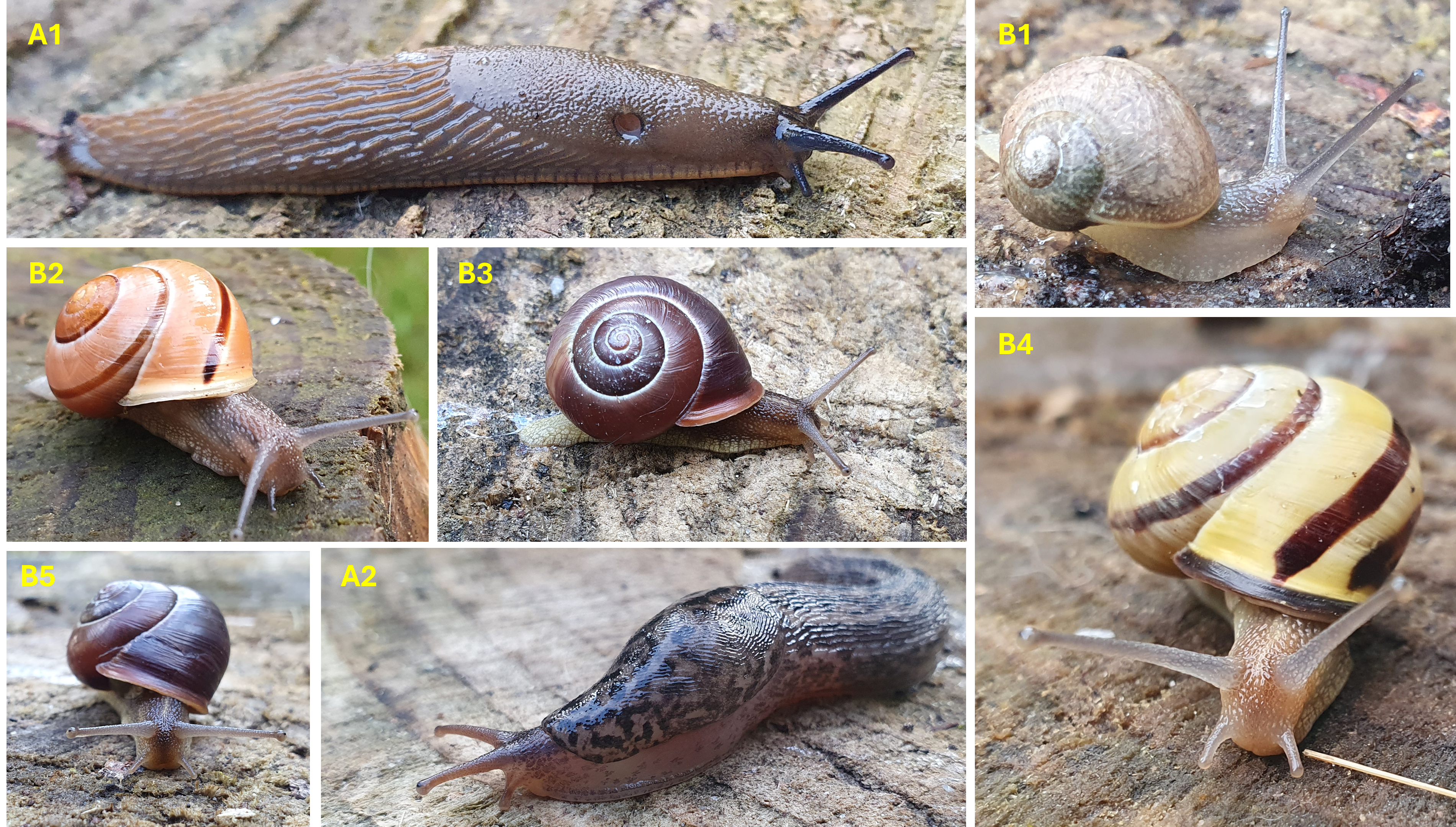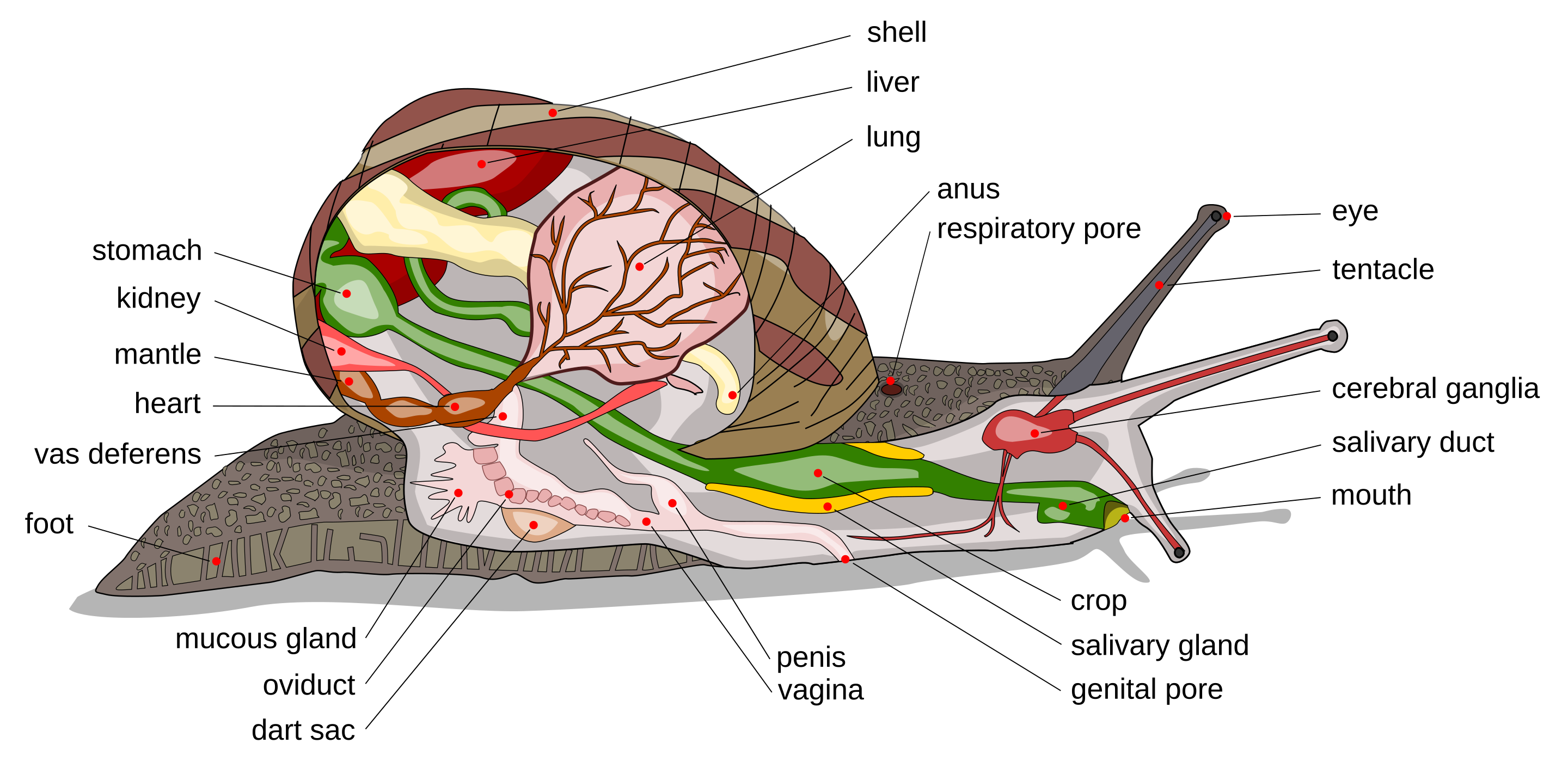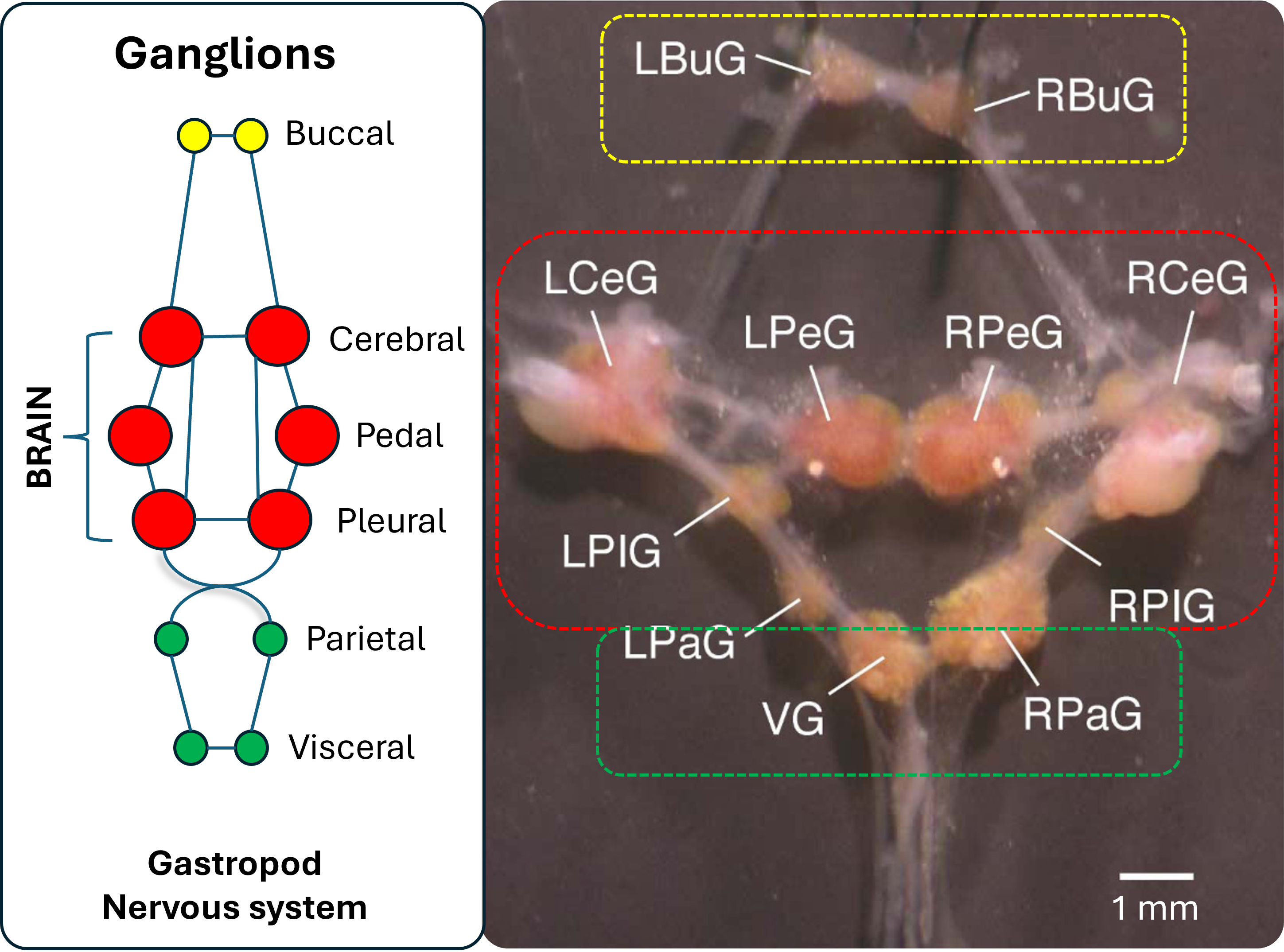Snails and slugs are gastropods belonging to the class of Gastropoda within the phylum Mollusca. Gastropoda contain all marine, freshwater and land snails and slugs. The most simple division within snails and slugs is that snails have an external shell, wheraes slugs don't. However, Some slugs do have an internalized shell and use it to store minerals. Snails can fully retreat into their shell and a subset of gatropods, semislugs, have a shell that they can partially retreat into but not entirely. Gastropoda.
Some examples of land snails and slugs can be found in the picture on the right.
More detailed information can be found here.

Land snails and slugs that live in our backyard, by Tonny Mulder

Original by Al2, English captions and other edits by Jeff Dahl Credits; CC BY-SA 4.0
The anatomy of the common land snail is represented here
More detailed information can be found here.
In general all gastropod brains have a relatively simple central nervous system consisting of a total of ~20,000 neurons, organized in a ring of interconnected ganglia (See picture on the right, the nervous system of Limnaea Stagnalis). The buccal ganglions lie most anterior, then the brain consisting of the cerebral, pedal and pleural ganlions, which are connected to the most posterior parietal and visceral ganglions:
More detailed information can be found here.

The dissected central ring ganglia of Lymnaea stagnalis.
Adapted from Feng et al. 2009 Credits; CC BY-SA 2.0
Tonny Mulder - University of Amsterdam